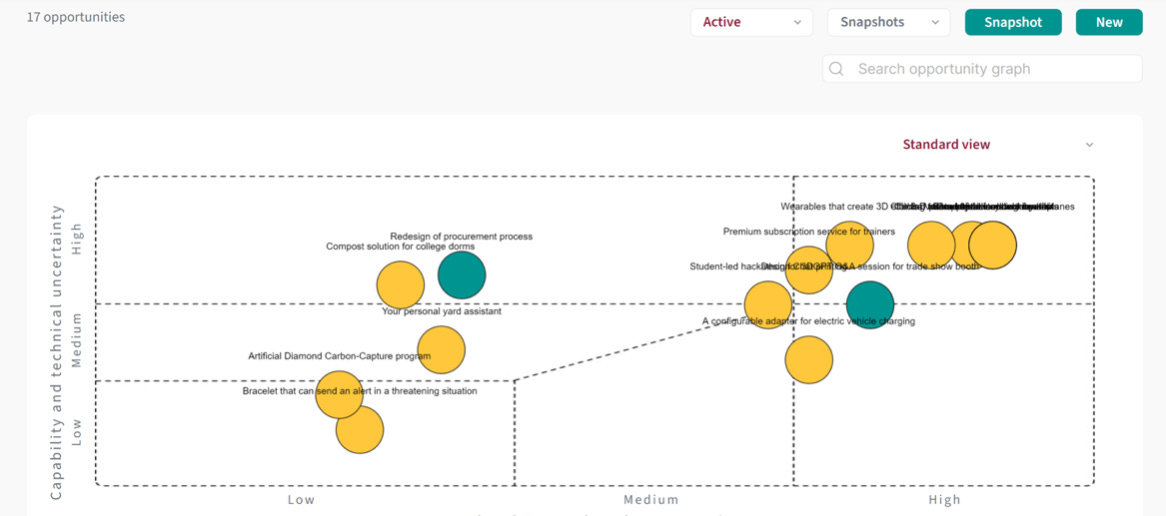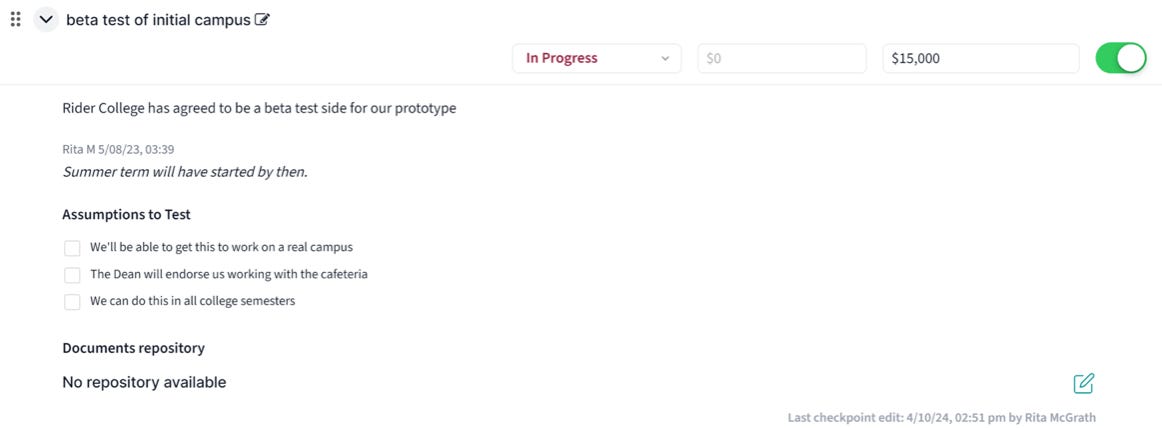Welcome to the world, SparcHub!
Apr 23, 2024After 8 years since founding Valize, 4 changes of software approaches, more than 50 iterations of my Columbia Executive Education program “Leading Strategic Growth and Change” and 5 books, the software designed to make managing the innovation process easier and more transparent is ready to make its debut.

There was never an app for that!
Discovery driven planning, the article that introduced the idea that has later found its way into many innovation methodologies, including Lean Startup, was published in 1995. The idea was further explored in my year 2000 book “The Entrepreneurial Mindset” (hint: do not publish a book with entrepreneurship in the title after one of the greatest entrepreneurial disasters of all time, the dot.com crash). “Discovery Driven Growth,” a book-length treatment of the concepts in the original article came out in 2009 (hint: do not publish a book with “growth” in the title after one of the greatest economic crashes of all time). Over the years, the concepts in these books and my other research have found their way into the curriculum for my “Leading Strategic Growth and Change” program which I have been leading at Columbia Business School since 1999.
There was gratifying recognition of the importance of the concept (most proudly for me, an acknowledgement by Clayton Christensen that it was “one of the most important management ideas, ever”). Steve Blank mentioned it in his article “Why the Lean Startup Changes Everything.” Thinkers50 put Discovery Driven Growth on its management classics book list.
And…
People would get the concept and implement it in their own organizations. Often, with the right leadership, they made real progress (for instance, check out my conversation with Ron Pierantozzi, formerly of Air Products and Chemicals ). Sometimes, with the help of trained consultants, they also achieved great results. It found its way into other programs, such as those run by Doug Smith (famous for writing the Xerox case, Fumbling the Future and for writing The Discipline of Teams). And, gratifyingly, when organizations used the system, it really worked well in high uncertainty situations.
But…
Over the years, I’ve been asked, many times, whether it would be possible to create a tool to make sure the organization was implementing the Discovery Driven Growth system properly. I formalized this effort in 2016, with the founding of Valize.
Attempt #1: Excel
Our first effort to instrument the discovery driven growth system was to try to design Excel-based spreadsheets that would show how to use parts of the system. Among the problems we ran into were that every business is slightly different, so designing templates was hard. Further, people who weren’t used to thinking in a discovery driven way would slip back into conventional planning and the process would get distorted.
There are a few survivors from that era that you can still check out. Our “BareBones Net present value calculator” developed for Discovery Driven Growth is available for free download at this link. A spreadsheet version of the reverse income statement is available for your perusal and enjoyment as well. But ultimately, our efforts to put our brains into Excel didn’t work out.
Attempt #2: Traditional enterprise software
Then, I was approached by someone from the world of traditional enterprise software development who really loved the concept and wanted to incorporate it into their own software suite. We formed sort of a joint venture in which I would provide the ideas and design suggestions and they would do the programming. We learned a bunch of things from this attempt. Software was moving from on-premises legacy instances to cloud-based applications. Their legacy software, in spite of all its power, was going to prove too rigid and limited to work well. We got to the end of that effort when (after not discussing this with me in advance) we finally lined up a beta test company, upon which my partner said it would cost the client at least $50,000 to do the initial installation that would be necessary for the test. End of that chapter.
Attempt #3: Sophisticated mobile programming company
We were then introduced to a fast-growing, highly talented tech company, who took on the project and who really “got” what the software was meant to do. After the creation of a few working prototypes, unfortunately, the project got caught in conflict between company leaders about priorities and sat without any attention for about 6 months before we finally pulled the plug.
And now, 4th time’s the charm?
Talk about learning from disappointments! But, happily, all of this brings us to the present. We have found a likeminded technical partner, have enough built to offer real value to initial customers and are planning to launch a version on April 17th that is intended to be manageable and affordable at a $15 / user / month price point. We’re just doing some final testing and putting on the finishing touches before making the software more broadly available.
It’s called SparcHub, for Strategy, Planning, Asset, Review Cadence.
So, what does it do?
Conventional plans are built as though you had a platform of experience to work with. So you’ll see 18-month rollout plans with launch dates and major milestones, all spelled out in advance. This is pretty reliable way to end up in my flops file. With discovery driven plans, on the other hand, the whole idea is to plan to reduce uncertainty, so you drive your plans through key checkpoints, which are learning events. These principles guide what is in the software.
Seeing your portfolio on one page
By answering just 42 multiple choice questions, you can “place” each of your projects on a map which shows you just how much uncertainty each one embodies. You can get a picture on one page of what’s going on at any particular time. You can also take snapshots, so you can time travel!
Uncertainties about markets go across the bottom of the chart. Uncertainties about technologies and capabilities go up the side. The placement of a project is determined by responses to a series of uncertainty questions.

Scoring uncertainties and capturing evidence
The uncertainties part of the software allows your team to score dimensions of uncertainty that my research suggests are critical to a project’s success. Further, teams can enter the explanation for why they scored it that way so we can go back in time and understand the logic for the score. As your team learns, projects go from upper right to lower left on the portfolio picture.

Creating and annotating assumptions and checkpoints
A core idea behind discovery driven planning is that of the assumption: knowledge ratio. We know that human beings are terrible at processing assumptions – we forget them, we confuse reality with our preferences, we sometimes turn them into facts in our minds without a shred of evidence and we get defensive about having our own assumptions challenged. In SparcHub, we create a way to identify the key learning events, or checkpoints, that your company will go through and the assumptions you’ll test – for what budget and with what amount of time. Lots of information in a very compact place.

And there’s more!
To watch a full demo of the SparcHub system, please visit our web site. I’m super excited to finally be able to share it with you!

